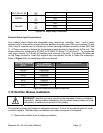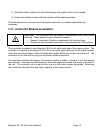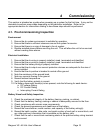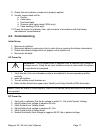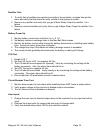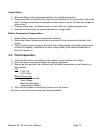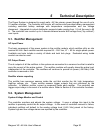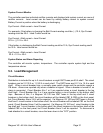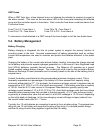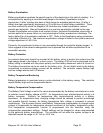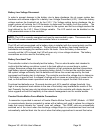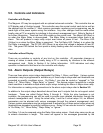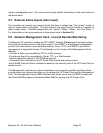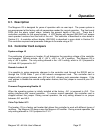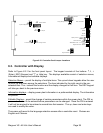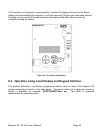Magnum VS –48 Vdc User’s Manual Page 22
GMT Fuses
When a GMT fuse trips, a fuse element burns out allowing the indicator to connect dc power to
the alarm contact. This turns on the fuse alarm LED on the fuse panel indicating the affected
group and the controller reports a fuse alarm. Each controller fuse alarm combines alarms from
4 individual fuses:
Fuse F1 to F4 : Fuse Alarm 1. Fuse F5 to F8 : Fuse Alarm 2.
Fuse F9 to F12 : Fuse Alarm 3. Fuse F13 to F16 : Fuse Alarm 4.
To disconnect a load attached to a GMT fuse pull the fuse straight out of the fuse holder base.
5.4. Battery Management
Battery Charging
Battery charging is integrated into the dc power system to support the primary function of
providing power to the load. Accurate measurement of battery parameters such as voltage,
current and temperature are used to maintain and protect the batteries attached to the power
plant.
Charging the battery at the correct rate reduces battery heating, increases the charge returned
to the battery and prevents excess hydrogen generation or, in the case of Valve Regulated Lead
Acid (VRLA) batteries, possible thermal runaway. The Magnum VS operates as a current
limited constant voltage battery charger. The current limit value is set by the controller’s Battery
Maximum Recharge Current parameter and is normally based on the size of the battery plant in
ampere-hours.
Consult the battery manufacturer for the recommended maximum charging current. This is
frequently expressed as a percentage of the battery's 20-hour ampere-hour capacity rating,
commonly abbreviated as "C". For example, the maximum recharge current in amperes may be
expressed as 0.2C, 20% C or C/5, all of which are equivalent. If the battery used has a capacity
of 120 Ah, then the 0.2 C max current is 24 amperes. Manufacturers typically specify max
recharge current between 0.1C to 0.3C (C/10 to C/3). Avoid high recharge rates that may induce
elevated battery temperatures that can lead to thermal runaway. A 0.1C max recharge current
is generally a conservative value that will result in a 90-95% recharge in 12-15 hours, depending
on the initial depth of discharge. In this case charging current will begin to taper (reduce) from
the current limited value after 3.5 - 7 hours.
Typically four 12-volt batteries are connected in series to form a battery string. The ampere-hour
rating for one 12-volt battery will equal the Ah rating of the string. For multiple parallel strings,
add the Ah rating of each string together to get the total Ah rating.



